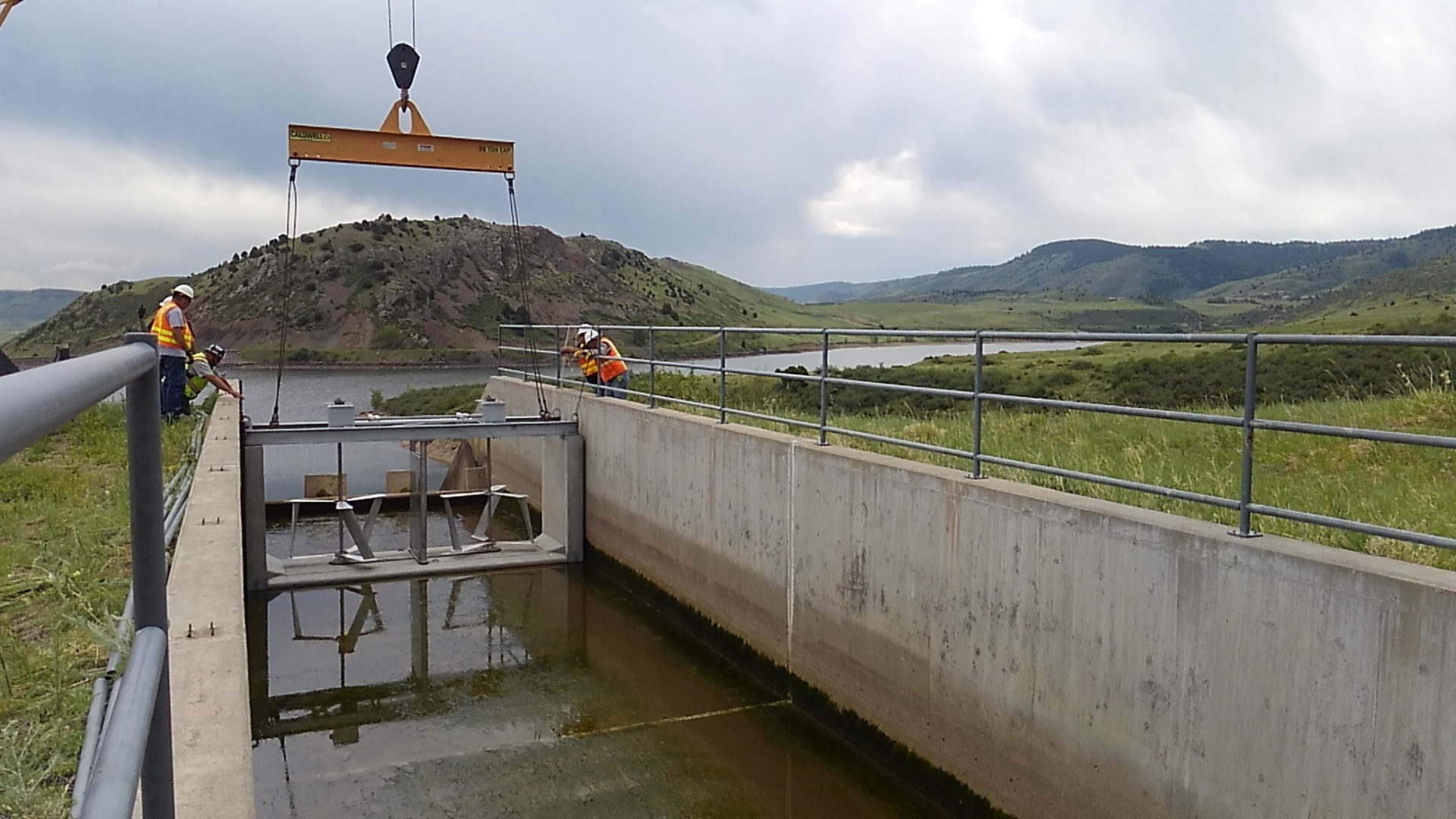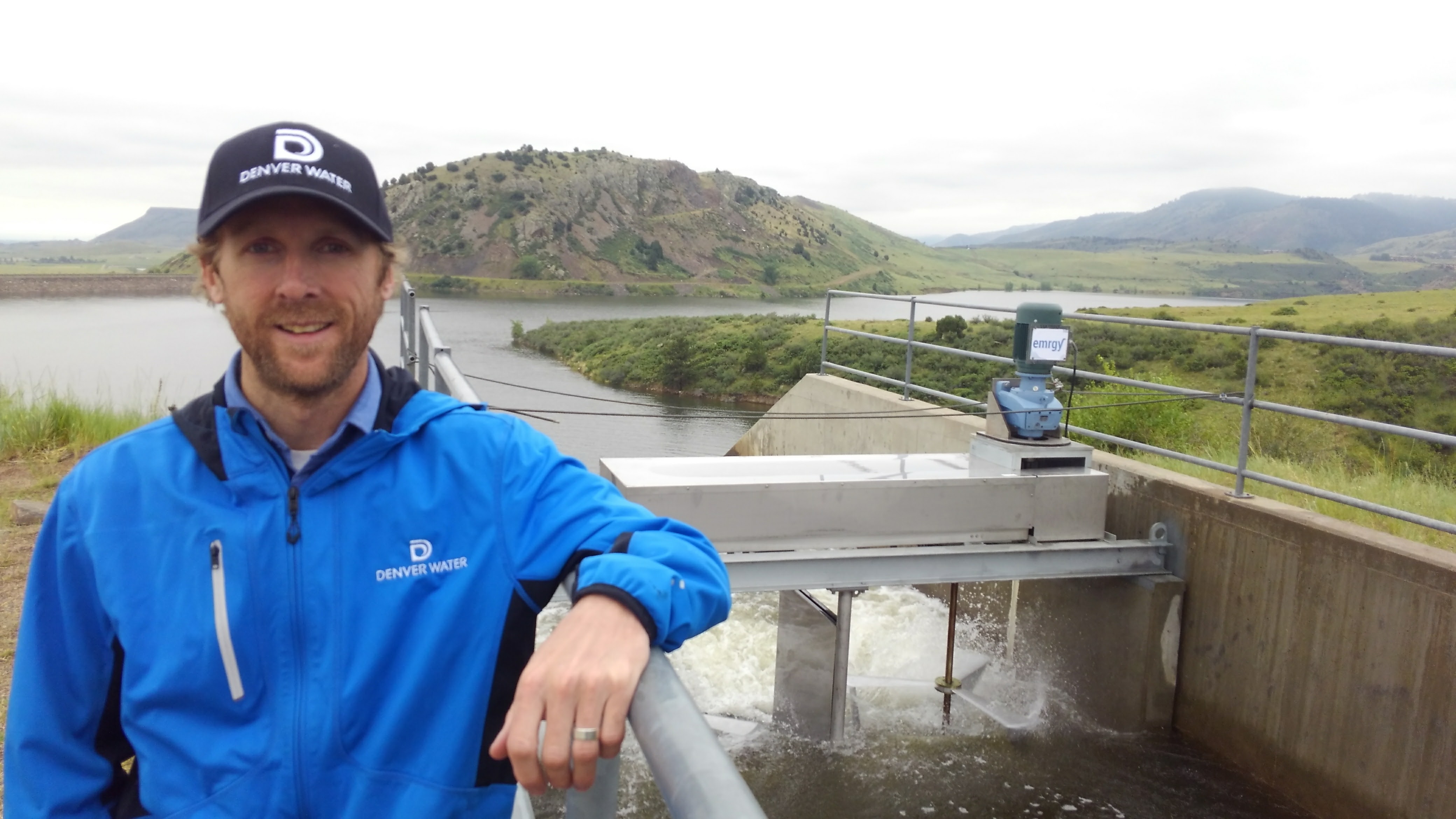
Hydropower in canal called energy ‘game-changer’
Beyond the din of the city, nestled between the craggy rocks in the foothills of Denver, a semi-truck rumbles up a winding, gravel road. Workers wave the flatbed to a resting stop near a concrete canal overlooking Ralston Reservoir in Golden, Colorado.
With a scorching sun blazing and rattlesnakes slithering nearby, a giant crane picks up a 16-foot wide, 10-foot tall concrete box containing a two gleaming metal rotors. Workers in bright orange safety vests and hardhats shout commands and yank cables as they help lower the frame into the canal. Project managers look on nervously until, with inches to spare, the beast is in, and muffled cheers go out from the crowd.
“I’m ecstatic,” said Emily Morris, CEO of Emrgy Inc. “To see this first turbine installed is an incredible milestone.”
After years of careful planning and precise calculations, the first-ever use of hydropower in a shallow, slow-moving waterway in Colorado will soon be ready for business.
“We already have seven hydropower plants in our system, mostly at our dams,” said Ian Oliver, Denver Water source of supply manager. “This project is a new, sustainable way to generate energy and help offset power consumption costs.
“We’re looking to the future to be able to expand our hydroelectric capabilities, and this is really the forefront of that effort.”
In all, Denver Water plans to place 10 turbines in a section of a 9-mile-long canal that extends from Gross Dam to Ralston Reservoir, at a cost of about $330,000. In total, each turbine will have the potential to generate about 80 megawatt hours a year in continuous operation, which is the energy equivalent of about seven average U.S. homes, according to Morris.
While another Emrgy turbine has been installed in a treatment plant in Atlanta, Georgia, this is the first time this technology has been placed in a row (or “array”) — similar to solar installations which connect multiple panels together for higher power production. Experts say this configuration will help extract as much energy as possible from the water in the canal.
There will be plenty of people tracking how the new system works. Scientists, hydrologists and analysts from public and private entities, including Denver Water, the National Renewable Energy Laboratory, Bureau of Reclamation and Colorado School of Mines, will collect data on flow rates, energy generation and more to make sure the technology is as effective as it can be.
When the research is complete, Denver Water plans to use the turbines to deliver power to Ralston Reservoir or to the electric grid through a local provider.
With more than 75 miles of canals in the Denver Water system, Oliver says there’s a lot of opportunity to tap into the flow of water to generate electricity. Denver Water hopes to use the technology throughout its water collection, treatment and distribution system in the future.
“We have a responsibility to the environment, and this is part of [our] portfolio of renewable energy,” said Oliver.
While critics of traditional hydropower question its potential impacts to the natural environment, Morris says this technology is different.
“Our technology is designed to integrate seamlessly with the existing environment as opposed to modifying that environment for our needs,” she said. “Our turbine runners are low-speed, and the gearing and drive system doesn’t use typical lubricants and oils that can be harmful to the environment.”
“This is a bit of an untapped resource for hydropower,” said Oliver. “Even though it’s not huge megawatt numbers, every kilowatt counts. We’re hoping this pilot is something other municipalities or government agencies can also look at for the future.”
The Bureau of Reclamation manages more than 8,000 miles of irrigation canals that could house the technology.
“This concept could be replicated not just here in the United States, but also across the world,” Morris said. “This is a game-changer.”


